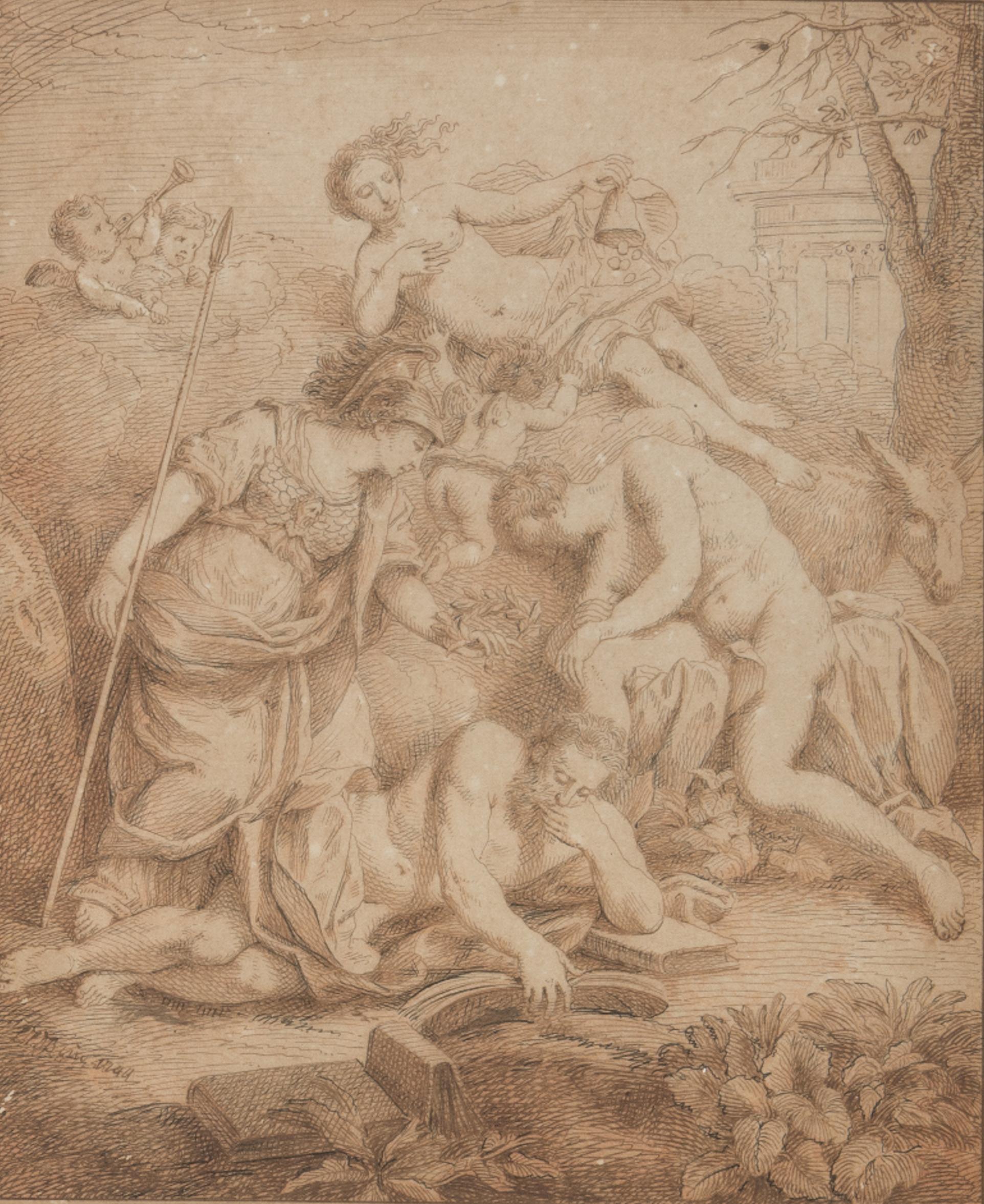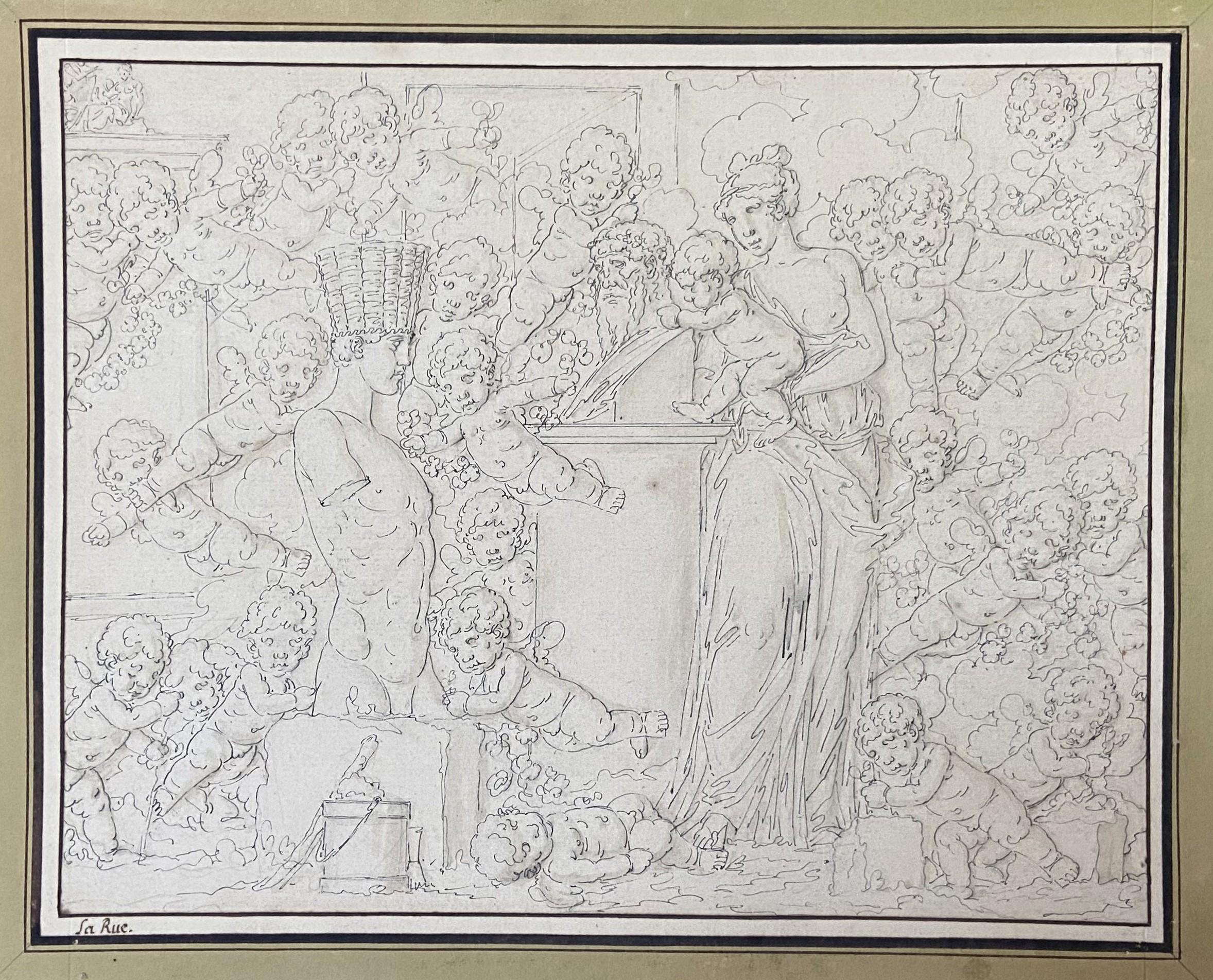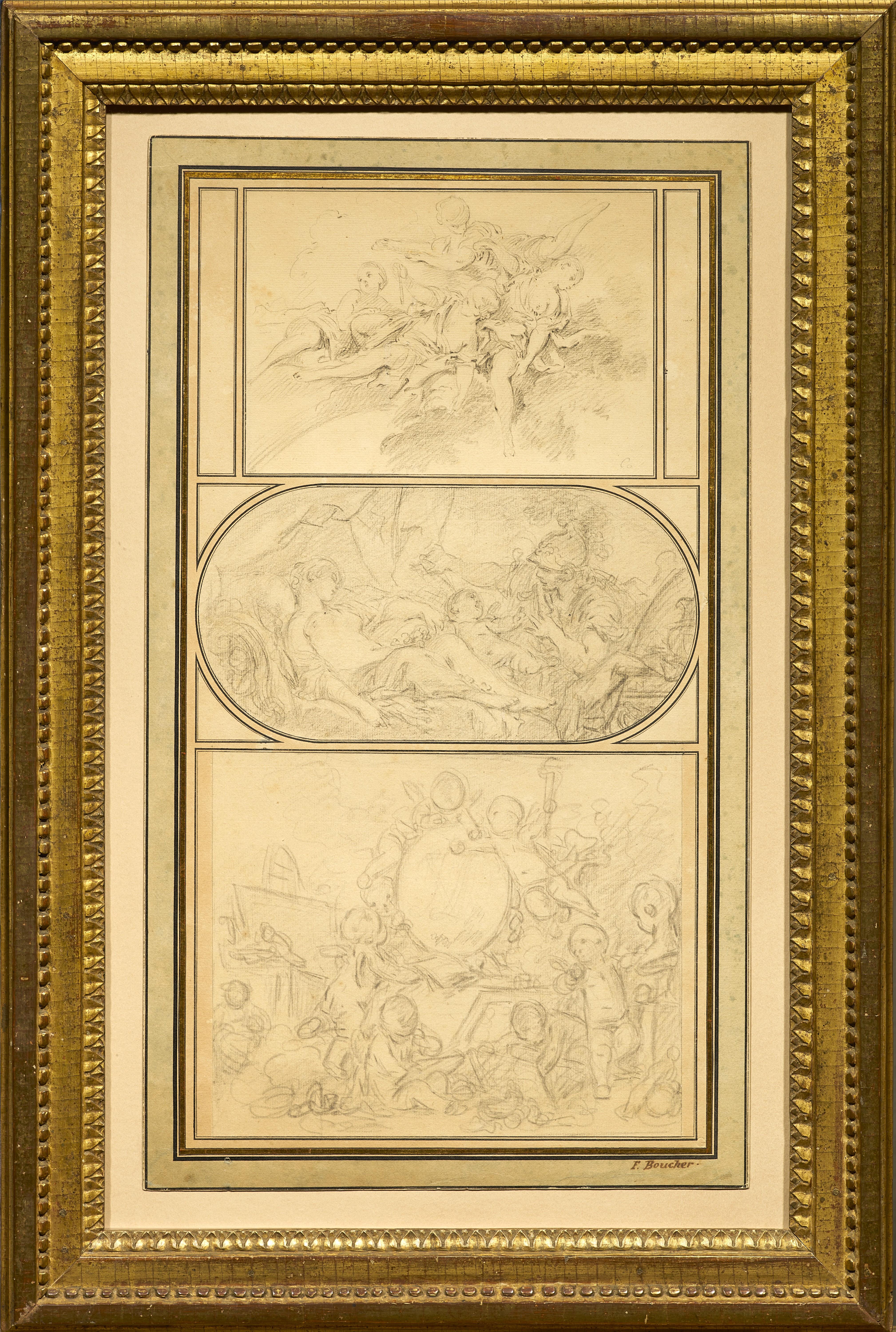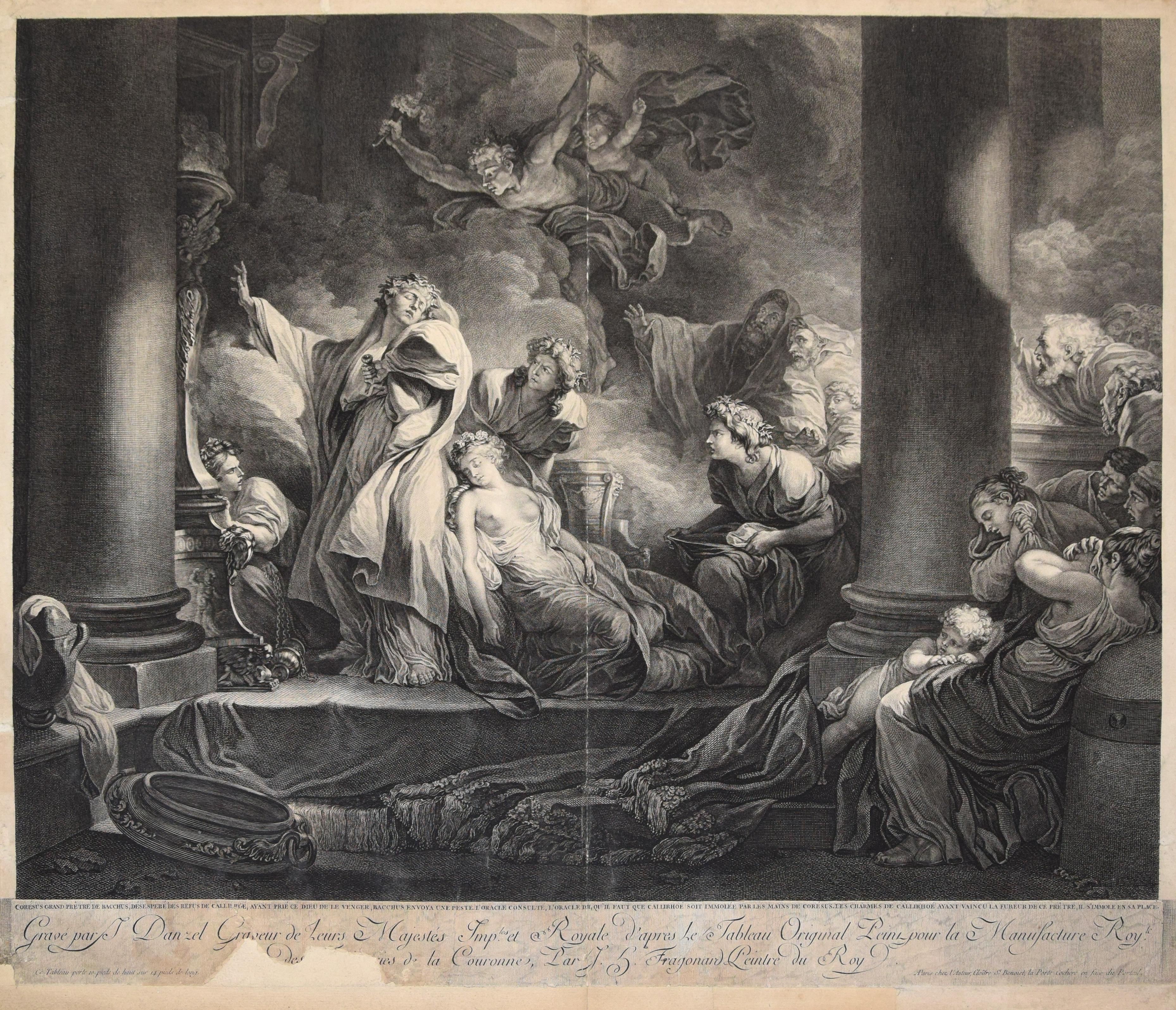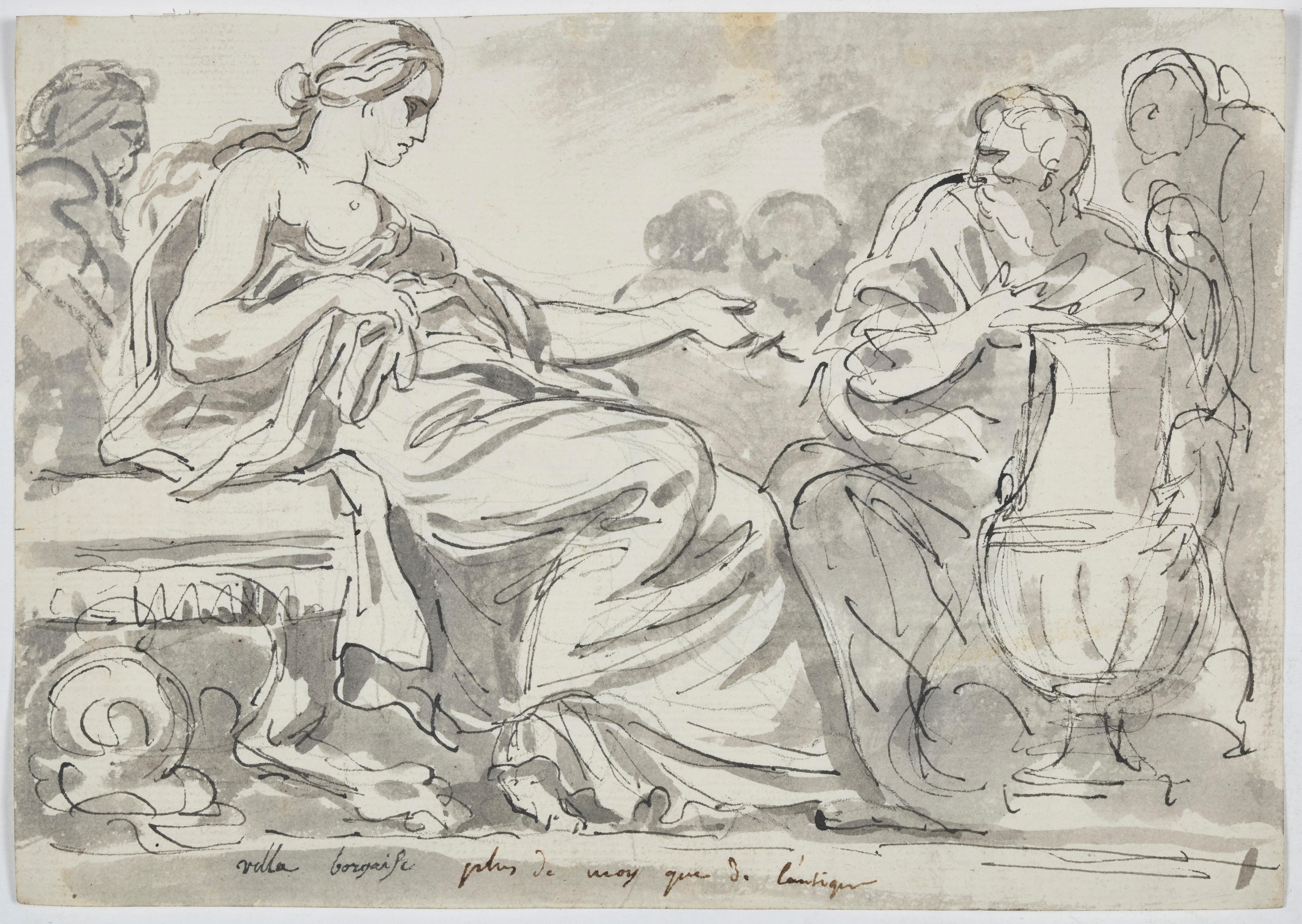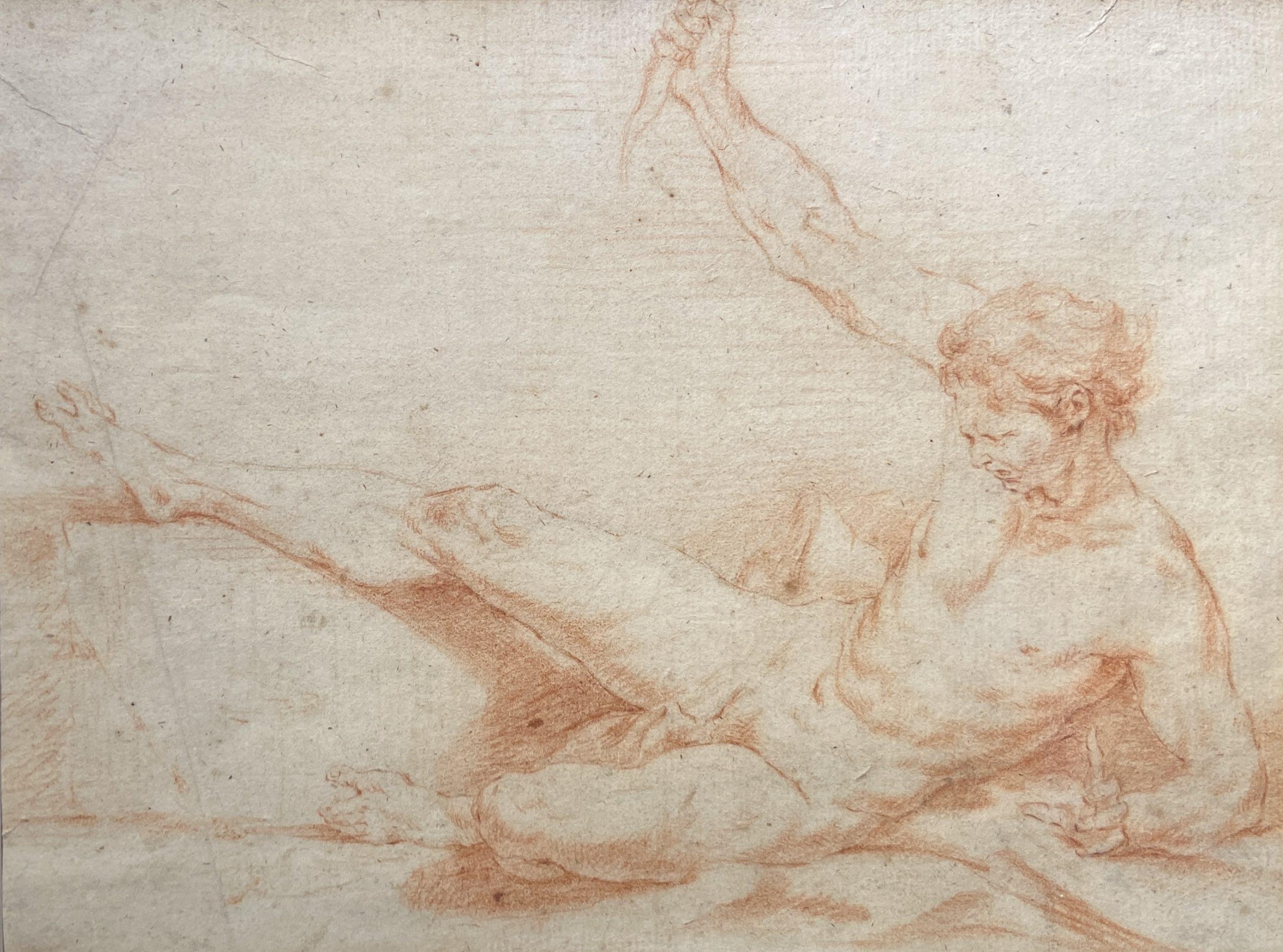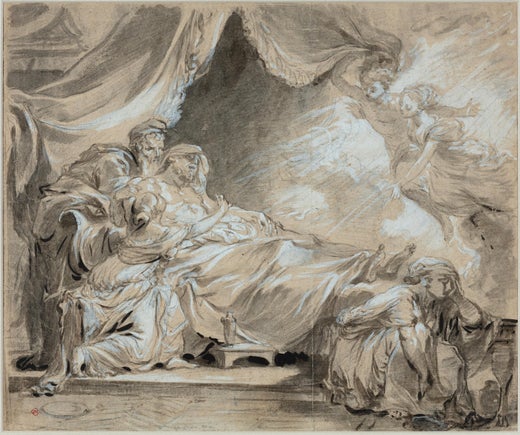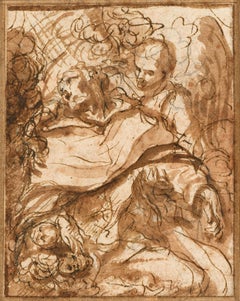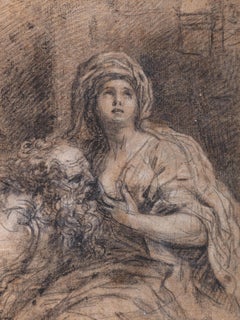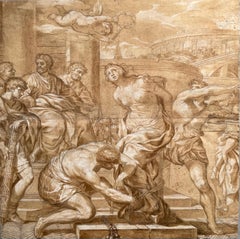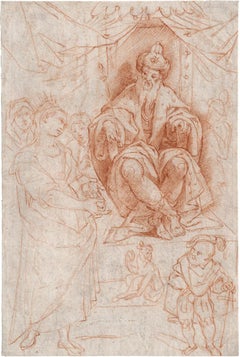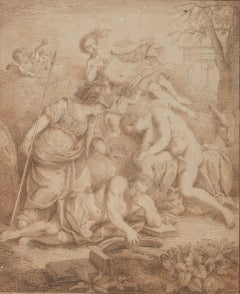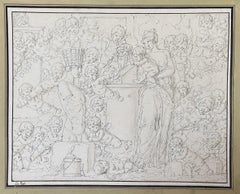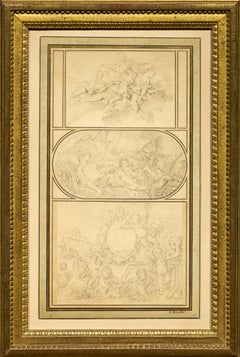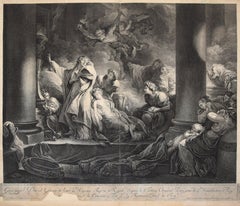Items Similar to The Death of Coresus
Want more images or videos?
Request additional images or videos from the seller
1 of 6
Jean-Baptiste GreuzeThe Death of Coresus1750
1750
$45,000
£33,472.39
€39,189.56
CA$62,790.28
A$70,264.09
CHF 36,688.60
MX$863,823.82
NOK 462,869.05
SEK 435,557.49
DKK 292,384.15
Shipping
Retrieving quote...The 1stDibs Promise:
Authenticity Guarantee,
Money-Back Guarantee,
24-Hour Cancellation
About the Item
JEAN-BAPTISTE GREUZE
(Tournus 1725 - 1805 Paris)
The Death of Coresus, circa 1750
Pen and brown ink, black ink tips, gray wash on black chalk, 455 x 385 cm
Bears on the reverse in the lower right an inscription in brown ink "Fragonard Père"
Provenance
Possibly Fragonard’s father collection, 18th century
WGT Collection
Henri LEDOUX (20th Century), his stamp lower left
Private collection, Italy
Capitolium Art, 16th June 2021, Lot n°2969, where acquired by the present owner
Private collection, France
We are grateful to Madame Yuriko Jackall, Chief Curator of French Paintings from the Wallace Collection, London, for confirming the attribution to Greuze on the basis of photographs.
Unpublished, this large sheet of Jean-Baptiste Greuze constitutes an interesting rediscovery on more than one count, in particular on the historical and iconographic level. The painter of emotions, who excelled in genre painting, produced a limited number of works on mythological subjects such as this. For instance, the March of Silenus, recently on auction (Christie’s Paris, May 18, 2022, lot 51, graphite, pen and brown and black ink, gray wash, 537 x 367 cm) and some Venuses and Psyches.
In our sheet, the graphic style that would become typical of Greuze combines brown and black ink with gray wash to skillfully place light and shadow on a sketch of light black chalk. The drawing can be compared to the Departure of the Young Savoyard, Historisch Museum in Amsterdam, dated 1750-1760 (Greuze le Dessinateur by E. Munhall, exp. cat., New York, The Frick Collection; Los Angeles, Musée J. Paul Getty, 2002, no. 56).
Executed with the tip of a brush and in gray-brown wash and heightened with black ink on black chalk, this fiery and lyrical drawing is an outstanding example of Greuze's early works, executed mainly in wash. The beauty and strength of this drawing demonstrate the draughtsmanship of the young artist, fostered by the influences of his contemporaries. He also embraced the monumentality and strength which created an unusual visual impact. Greuze's art sought to illustrate virtue as conceived by the philosophers of the Lumières. The contrast between the often-cynical rococo hedonism and the glorification of virtuous feelings in Greuze is quite striking.
A subject inherited from Pausanias (VII 21), it does not seem to relate to any of Greuze's surviving paintings. His free style and his way of presenting the composition with rapid and bold lines and a fluid wash already announce the future preparatory sketches of Greuze, which will relate to his largest painted commissions. Stylistically, he augurs his drawings of subjects of more classical inspiration, dating from the 1760s; and even mature works like Morning Prayer, circa 1775, ink and graphite on paper, kept at the Greuze Museum in Tournus.
Greuze's ability to produce strong images of almost theatrical quality is embodied in our drawing. Like a stage set, its characters interact under a curtain backdrop, their emphatic gestures conveying the drama of the scene as Coresus lies on his bed, Callirohe kneeling at his side.
Son of a roofer and architect, Jean-Baptiste Greuze was drawn to drawing from an early age and very early on showed a talent for painting, which prompted his father to place him as an apprentice in the studio of the Lyon painter Charles Grandon. Greuze developed his pictorial technique there but could not forge a precise artistic taste for lack of a master's work to observe and copy. He then continued his apprenticeship in Paris at the Royal Academy of Painting and Sculpture, where he was a pupil of the famous Charles Joseph Natoire, Painter to the King. His debut at the Salon of 1755 was a triumph. His Père de famille lisant la Bible à ses enfants was a great success. He became an associate member of the Academy and went to study in Rome from 1755 to 1757.
The rediscovery of our refined composition completes the graphic corpus of Greuze's work, and its importance is still justified in that it allows us to grasp the artist's style at an early stage.
- Creator:Jean-Baptiste Greuze (1725 - 1805, French)
- Creation Year:1750
- Dimensions:Height: 14.97 in (38 cm)Width: 17.72 in (45 cm)
- More Editions & Sizes:NonePrice: $45,000
- Medium:
- Movement & Style:
- Period:
- Condition:
- Gallery Location:Paris, FR
- Reference Number:1stDibs: LU2258215165842
Jean-Baptiste Greuze
Greuze was a French genre and portrait painter who initiated a mid-18th-century vogue for sentimental and moralizing anecdotes in paintings.
About the Seller
No Reviews Yet
Vetted Professional Seller
Every seller passes strict standards for authenticity and reliability
Established in 2010
1stDibs seller since 2022
Typical response time: 1 hour
- ShippingRetrieving quote...Shipping from: Paris, France
- Return Policy
Authenticity Guarantee
In the unlikely event there’s an issue with an item’s authenticity, contact us within 1 year for a full refund. DetailsMoney-Back Guarantee
If your item is not as described, is damaged in transit, or does not arrive, contact us within 7 days for a full refund. Details24-Hour Cancellation
You have a 24-hour grace period in which to reconsider your purchase, with no questions asked.Vetted Professional Sellers
Our world-class sellers must adhere to strict standards for service and quality, maintaining the integrity of our listings.Price-Match Guarantee
If you find that a seller listed the same item for a lower price elsewhere, we’ll match it.Trusted Global Delivery
Our best-in-class carrier network provides specialized shipping options worldwide, including custom delivery.More From This Seller
View AllSaint Francis of Assisi in Ecstasy
By Salvator Rosa
Located in Paris, Île-de-France
Salvatore Rosa
(Naples 1615 - 1673 Rome)
Saint Francis of Assisi in Ecstasy
Pen and brown ink, brown wash over black chalk, on paper
7 x 5 cm
Bears the stamps of collections on the...
Category
17th Century Old Masters Figurative Drawings and Watercolors
Materials
Ink
Roman Charity (Cimon and Pero)
Located in Paris, Île-de-France
Michel CORNEILLE the Younger (Paris, 1642 – 1708)
Roman Charity (Cimon and Pero)
Black chalk with white highlights on beige paper
Height: 28 cm – Width: 20 cm
Unsigned
France, cir...
Category
Late 17th Century Old Masters Figurative Drawings and Watercolors
Materials
Paper, Charcoal, Chalk
The Torture of Saint Concordia
By Domenico Piola the Elder
Located in Paris, Île-de-France
Circle of Domenico Piola (Genoa 1627 – 1703)
The Torture of Saint Concordia
Black chalk, brown ink and brown wash on two sheets of paper,
40.5 x 42 cm
Unsigned
Provenance:
Estate...
Category
17th Century Old Masters Figurative Drawings and Watercolors
Materials
Ink
Italian School, 17th Century - Study After The Frescoes Of Bernardino Lanino
Located in Paris, Île-de-France
Italian School, 17th century
Study after Bernardino Lanino’s Frescoes in Santa Caterina, Milan
Red chalk on paper
297 x 186 mm
Annotated on the verso: “Vani” (otherwise unsigned)
...
Category
17th Century Old Masters Interior Drawings and Watercolors
Materials
Chalk, Laid Paper
Study for a fresco
Located in Paris, Île-de-France
Attributed to Francesco PENNI (1488 – 1528)
Study for a fresco
Pen and brown ink, brown wash heightened with white on prepared paper
14 x 12 cm
Unsigned
On the mount, handwriting ...
Category
16th Century Old Masters Interior Drawings and Watercolors
Materials
Ink
$11,946
French School, early 19th century - Battle Scene between Greeks and Ottomans
Located in Paris, Île-de-France
French School, early 19th century
Battle Scene between Greeks and Ottomans, circa 1820–1830
Pencil and brown wash on paper,
30 × 46 cm
Unsigned
Provenance:
Former collection of P...
Category
Early 19th Century Old Masters Figurative Drawings and Watercolors
Materials
Chalk, Crayon
You May Also Like
Allegorical Scene - Sepia Drawing Attribute to L.F. Dubourg -Early 1700
Located in Roma, IT
Allegorical Scene is an original modern artwork attributed to the Louis Fabricius Dubourg in the first half of the XVIII Century.
Original sepia drawing...
Category
Early 18th Century Figurative Drawings and Watercolors
Materials
Ink
Louis-Félix de La Rue (1730-1777) A Mythological scene, drawing
By Louis-Félix Delarue
Located in Paris, FR
Louis-Félix de La Rue (1730-1777)
A Mythological scene
Pen and black ink on paper
Bears an old inscription with the name of the artist on the lower left bo...
Category
1770s Old Masters Figurative Drawings and Watercolors
Materials
Ink
Three drawings by François Boucher in a mounting by Jean-Baptiste Glomy
By François Boucher
Located in PARIS, FR
We would like to thank Juliette Parmentier-Courreau of the Custodia Foundation for her welcome and support during the consultation of Glomy’s Journal des Ouvrages.
This spectacularly large "feuille de desseins ajustés" commissioned by François Boucher from Jean-Baptiste Glomy is emblematic of the painter's art and mastery of rocaille. It is also fully representative of the taste of this period in the field of decorative arts. The largest of these three drawings, placed at the bottom of the composition, is particularly interesting: dating from around 1756, it constitutes a modello (apparently unpublished) for the frontispiece of the "Catalogue des tableaux de Monsieur de Julienne"), preserved in the Morgan Library in New York.
1. François Boucher, the master of French rocaille
The extraordinary career of Francois Boucher was unmatched by his contemporaries in versatility, consistency and output. For many, particularly the writers and collectors who led the revival of interest in the French rococo during the last century, his sensuous beauties and plump cupids represent the French eighteenth century at its most typical. His facility with the brush, even when betraying the occasional superficiality of his art, enabled him to master every aspect of painting – history and mythology, portraiture, landscape, ordinary life and, as part of larger compositions, even still life. He had been trained as an engraver, and the skills of a draftsman, which he imbued in the studio of Jean-Francois Cars (1661 – 1738), stood him in good stead throughout his career; his delightful drawings are one of the most sought-after aspects of his oeuvre.
As a student of Francois Lemoyne (1688 - 1737), he mastered the art of composition. The four years he spent in Italy, from 1727-1731, educated him in the works of the masters, classics and history, that his modest upbringing had denied him.
On his return to Paris in 1734, he gained full membership of the Royal Academy of Painting and Sculpture with his splendid Rinaldo and Armida (Paris, Musée du Louvre). Although, throughout his career, he occasionally painted subjects taken from the Bible, and would always have considered himself first as a history painter, his own repertoire of heroines, seductresses, flirtatious peasant girls and erotic beauties was better suited to a lighter, more decorative subject matter. His mastery of technique and composition enabled him to move from large scale tapestry...
Category
1750s Old Masters Figurative Drawings and Watercolors
Materials
Chalk, Ink
Le Grand prêtre Coresus - Etching by J- Danzel - Late 18th Century
By Jérôme Danzel
Located in Roma, IT
Le Grand prêtre Coresus is an artwork realized by Jérôme Danzel in the second half of the XVIII Century.
Burin after Fragonard's artwork "Coresus et ...
Category
Late 18th Century Modern Figurative Prints
Materials
Etching
Study in the Antique Style, a neoclassical drawing by Augustin Pajou
Located in PARIS, FR
In this lively and fresh drawing, probably taken from one of the artist's notebooks, Pajou presents us with a composition freely inspired by antiquity, as a souvenir of a visit to th...
Category
1750s Old Masters Figurative Drawings and Watercolors
Materials
Ink
The Death of Attis, 18th Century French Red Chalk Drawing, Greek Mythology
Located in London, GB
Red chalk on paper
Image size: 9 x 7 inches (23 x 17.75 cm)
Acid free mount
The Greek god Attis was the spouse of Cybele, the fertility goddess. He was from Phrygia, a kingdom in c...
Category
18th Century French School Figurative Drawings and Watercolors
Materials
Chalk
More Ways To Browse
Antique Death
Old Master Italian Drawings
Drawings Italian 18th Century
Old Master Sketch
Jean Baptiste Artist
Wallace Antique
Fragonard Painting
J King Paintings
Old Antique Bed
Old Antique Beds
Royal Bed Frames
Antique King Beds
Charles Counts
18th Century Bible
Antique French Bible
18th Century French Beds
18th Century Pen And Ink
E Browning 56
